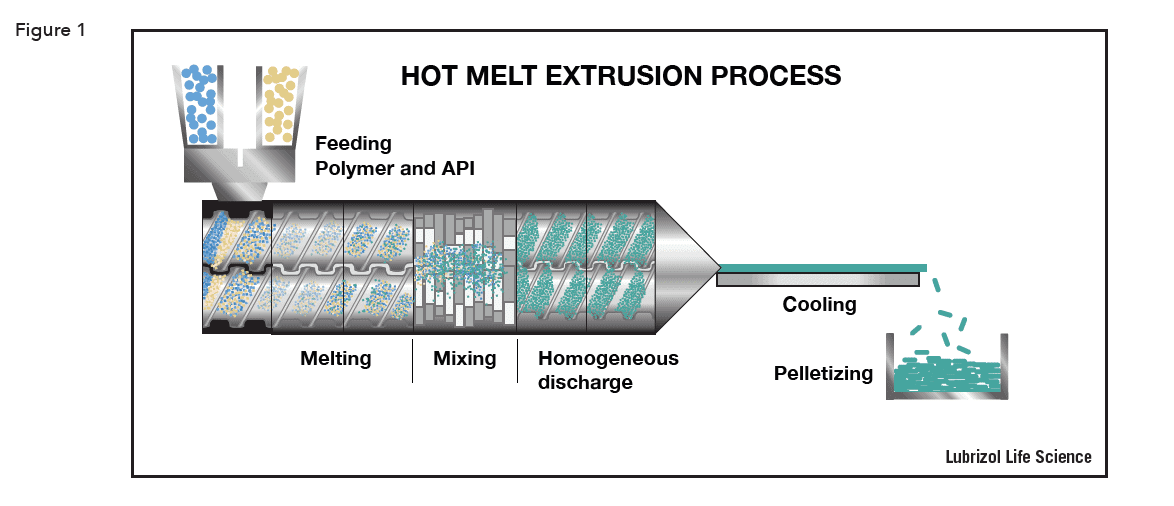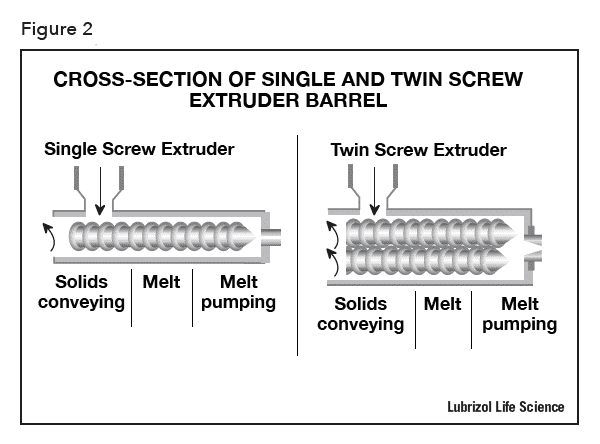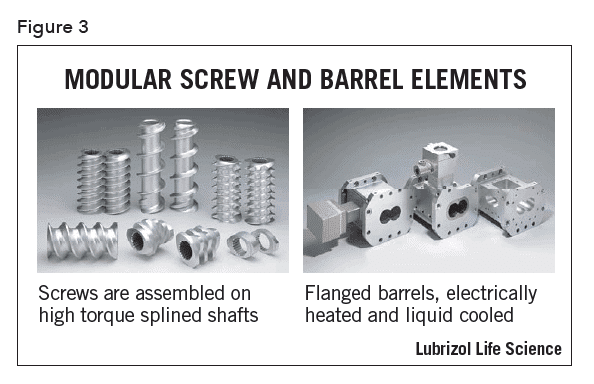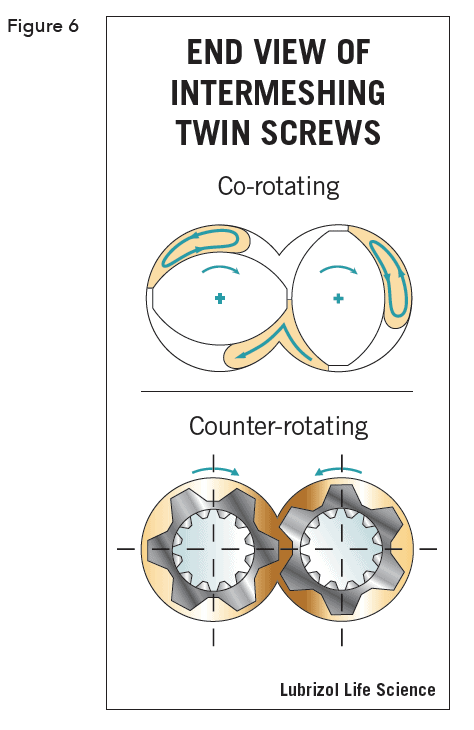HME machine and principles
Hot melt extrusion (HME) is the process of continuously applying heat and pressure to melt a polymer and forcing it through an orifice. The hot melt extrusion process is well-known, developed to produce polymer products of uniform shape and density, and its industrial application dates back to the 1930s. It is one of the most widely applied processing technologies in the plastic, rubber, and food industries and is used to prepare more than half of all plastic products including bags, films, sheets, tubes, fibers, foams, and pipes. HME has more recently been applied to the healthcare industry where it is used to manufacture medical devices and mix active pharmaceutical ingredients (APIs) with polymers. The hot melt extrusion process is used to enhance the API’s bioavailability or prepare precursors for thermoplastic drug-eluting devices, such as subcutaneous and intraocular implants and intravaginal rings. This technical brief discusses the equipment and principles of HME with an emphasis on its use in the pharmaceutical industry.

The HME process is shown schematically in Figure 1
Extruder for Hot Melt Extrusion Process
HME is carried out using an extruder – a barrel containing one or two rotating screws that transport material down the barrel. Extruders consist of four distinct parts:
An opening through which material enters the barrel, which may have a hopper filled with the material(s) to be extruded or be continuously supplied in a controlled manner by one or more external feeder(s).
A conveying (process) section, which comprises the barrel and the screw(s) that transport and, where applicable, mix the ma
An orifice (die) for shaping the material as it leaves the
Downstream auxiliary equipment for cooling, cutting, and/or collecting the finished
Application of HME technology in pharmaceutical industry
There are two types of extruders: single and twin screw extruders. Single screw extruders melt and shape polymers. Twin screw extruders mix polymers with other materials, like pigments, fillers, and APIs, and remove volatile substances. In pharmaceuticals, twin screw extruders are preferred. Their inter-meshing screws ensure better mixing, creating a solid with evenly dispersed API particles or a solid solution of API in the polymer. This improves the dissolution rate and bioavailability of poorly soluble APIs. Evenly distributed API is essential for drug-eluting devices to ensure consistent drug-release rates between batches.


Melting happens due to frictional heating inside the barrel. In twin-screw extruders, materials shear between the screws and the barrel wall. The barrel is heated with heaters or cooled with water. Temperatures are optimized to keep material viscosity low for mixing and movement, avoiding thermal degradation.
Twin screw extruder screws are engineered for different mixing and conveying conditions in the barrel. During development, modular screws with multiple elements on a common shaft allow tailored designs. Screw sections can reduce particle size, mix, and convey materials. The L/D ratio (length to diameter) optimizes mixing and zone number for the final product. Figure 4 shows a complete modular screw. Single-piece production screws can match development designs and are easier to clean for cGMP compliance.

There are two families of twin screw extruders: high-speed energy input (HSEI) twin-screw extruders, which are primarily used for compounding, reactive processing, and/or devolatilization, and low-speed late fusion (LSLF) twin-screw extruders, which are designed to mix at low shear and pump at uniform pressures. Screws may be co-rotating (self-wiping), which is the most popular, or counter-rotating (calendar gap). See Figure 6.


Different exit dies to shape the extrudate into the desired profile. Sheet and film dies are used for transdermal films. Strand dies are used for medical tubing and drug-eluting devices. Shape dies are used in blow molding, and co-extrusion dies are for reservoir device designs.
Various downstream components assist in finishing. Water baths and air knives cool the extrudate. Conveyor belts move it from the die to the end of the line. Strand-cutters cut the extrudate into tubing or rods. Spoolers collect the extrudate. Pelletizers cut it into smaller pieces for capsule filling or injection molding.
Product development and material selection
Material selection is crucial for a successful product. Polymers should be thermoplastic, stable at process temperatures, and chemically compatible with the API. For solid oral dosage forms, water-soluble polymers like poly(ethylene glycol) and poly(vinylpyrrolidinone) are common. With growing interest in HME for pharmaceuticals, suppliers offer polymers specifically designed for these applications. Drug-eluting devices generally use water-insoluble polymers, such as ethylene vinyl acetate copolymers (EVAs) or polyurethanes.
Hot melt extrusion process mixes the API with the polymer with minimal shear and thermal stress, reducing API degradants. Antioxidants are often added, and the short residence time in the barrel (minutes) minimizes thermal degradation, especially compared to batch mixing.
One strategy to control drug elution from devices like intravaginal rings extends simple extrusion. Co-extrusion of a drug-loaded core with a release-controlling polymer sheath forms a two-layer core-sheath strand. A special extrusion head, fed by two perpendicular extruders, supplies the core and sheath materials. The core-sheath strand is cut and ends are connected to create the final device.
Hot melt extrusion processoffers product developers a processing option that maximizes API mixing while minimizing degradation, enabling innovative medical devices, dissolving oral dosage forms, and drug-eluting devices.
Disclaimer: This article’s data, charts, and content are sourced from the Internet or publicly published materials. They are for reference, communication, and learning only, with no commercial intent. Copyright belongs to the original authors and sources. If any copyright owner believes this article infringes on their rights, don’t hesitate to get in touch with us for a timely resolution.

